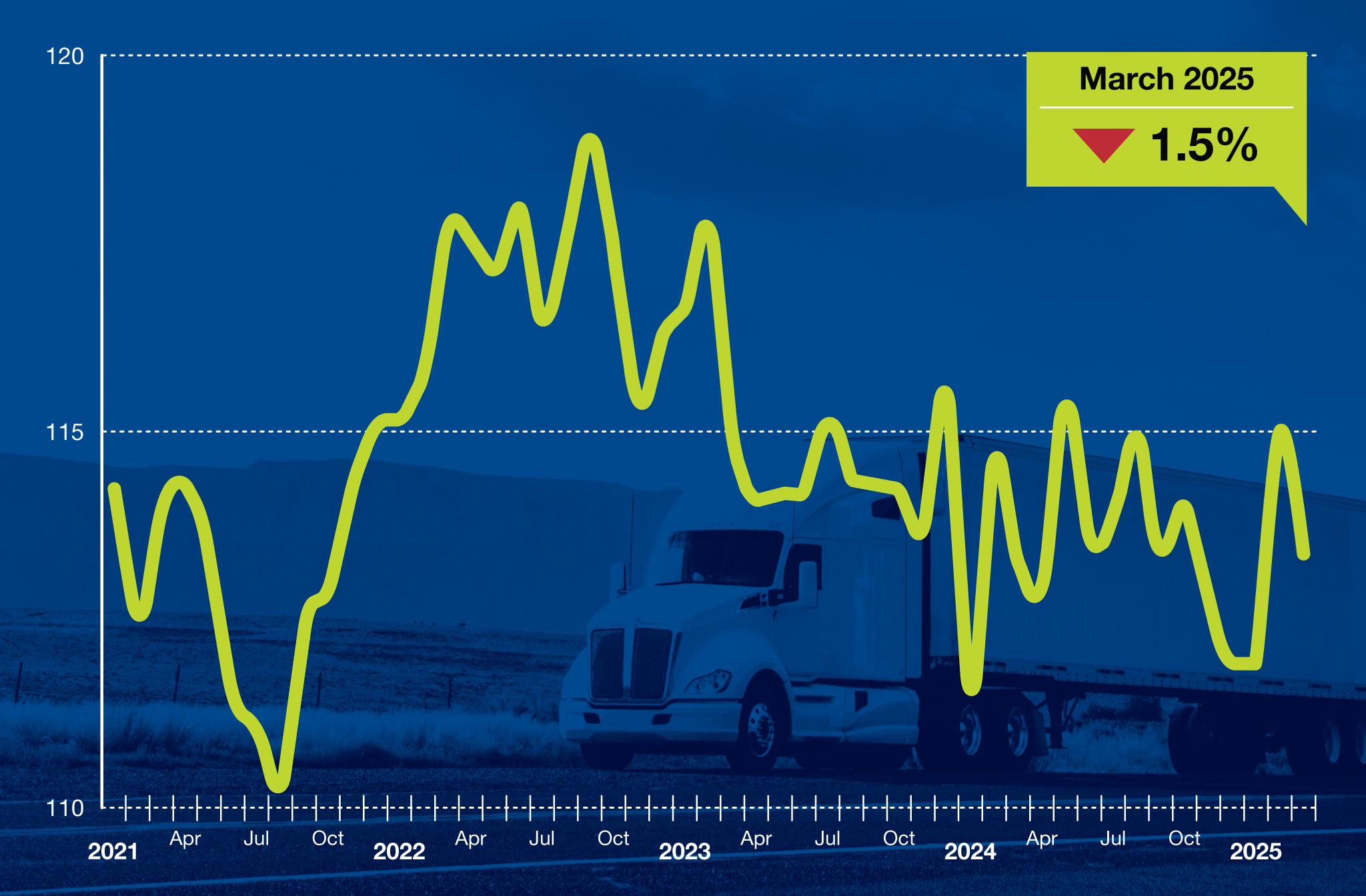Washington – Trucking activity in the United States slipped in March, giving back a little more than half of the gain from February. Specifically, truck freight tonnage decreased 1.5% after surging 2.8% in February, according to the American Trucking Associations’ advanced seasonally adjusted For-Hire Truck Tonnage Index.

“Solid manufacturing output in March, led by robust auto production, likely helped truck freight tonnage not fall more after a very strong February,” said ATA Chief Economist Bob Costello. “Overall in the first quarter, tonnage increased marginally from both the fourth and first quarters of 2024. While the gains were not strong at half a percent and less, it was the first time that the quarterly average increased both sequentially and from a year earlier in two years. That tells me that the freight market did in fact turn around in the first three months of the year despite an uncertain outlook.”
In March, the ATA advanced seasonally adjusted For-Hire Truck Tonnage Index equaled 113.4, down from 115.1 in February. The index, which is based on 2015 as 100, was up 0.2% from the same month last year, the third straight year-over-year increase, which hasn’t happened since late 2022 and early 2023.
The not seasonally adjusted index, which calculates raw changes in tonnage hauled, equaled 114.6 in March, 9.5% above February’s reading of 104.7.
Trucking serves as a barometer of the U.S. economy, representing 72.7% of tonnage carried by all modes of domestic freight transportation, including manufactured and retail goods. Trucks hauled 11.27 billion tons of freight in 20241. Motor carriers collected $906 billion, or 76.9% of total revenue earned by all transport modes.
Both indices are dominated by contract freight, as opposed to traditional spot market freight. The tonnage index is calculated on surveys from its membership and has been doing so since the 1970s. This is a preliminary figure and subject to change in the final report issued around the 5th day of each month. The report includes month-to-month and year-over-year results, relevant economic comparisons, and key financial indicators.